Why The Modi Govt Is Going Slow: Restoring the holy river to its past glory had remained on the government’s backburner as removing the dirt would have hurt the vote-bank of around 400 million Indians who live in the river basin. — Chetan Chauhan, Hindustan Times, New Delhi, August 14, 2014
“In its affidavit, the Narendra Modi government said it was committed to depolluting the river, which was an election promise and has recently been deemed national priority. It also said a group of professionals from the IITs have been asked to finalise the plan by the end of the year. … The government has said it is committed to its pre-poll promise of making the river which passes through 29 major cities, 23 small cities and 48 towns, free from pollution.” – Bhadra Sinha
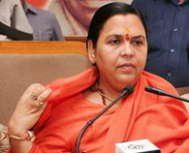 The Supreme Court asked the Centre on Wednesday for a PowerPoint presentation within three weeks on a stage-wise strategy to clean up the Ganga, saying the government’s “bureaucratic plan” may take 200 years to accomplish the task.
The Supreme Court asked the Centre on Wednesday for a PowerPoint presentation within three weeks on a stage-wise strategy to clean up the Ganga, saying the government’s “bureaucratic plan” may take 200 years to accomplish the task.
“Please try that the next generation is able to see the river in its original form. We don’t know whether we will see it or not,” said a bench headed by Justice T.S. Thakur after studying the government’s latest affidavit.
 “After seeing your action plan, it seems Ganga will not be cleaned even after 200 years. Evaluate the dream project you have to take steps to restore Ganga to its pristine glory.”
“After seeing your action plan, it seems Ganga will not be cleaned even after 200 years. Evaluate the dream project you have to take steps to restore Ganga to its pristine glory.”
In its affidavit, the Narendra Modi government said it was committed to depolluting the river, which was an election promise and has recently been deemed national priority. It also said a group of professionals from the IITs have been asked to finalise the plan by the end of the year.
The bench said it was not concerned about the financial assistance coming from other countries but was worried how the common people will be explained about the proposal for proceeding with project of cleaning the river.
“We don’t want to get into the nitty-gritty of committees etc. But common man expects to know how the cleaning Ganga process will emerge. They should at least know how the government is proceeding.
Over Rs. 20,000 crore has been spent since 1985 when the Clean Ganga mission was launched. The goal, however, remains unachieved.
“You have given a very bureaucratic kind of explanation. We want to see it in a layman’s language as to how you are proceeding with the project,” the bench told solicitor general Ranjit Kumar after perusing an affidavit filed by Uma Bharti’s ministry of water resources, river development and Ganga rejuvenation.
The apex court, which has been monitoring the cleaning process, will next hear the 29-year-old public interest litigation filed by advocate MC Mehta on September 24.
The bench also asked the Centre to explain what steps it had taken to preserve the 135-km stretch of the river from Gangotri downstream, notified as an eco-sensitive zone by the Union government in December 2013.
Solicitor general Ranjit Kumar informed the court how the government had received World Bank funds and financial and technical aid from Japan to implement various projects. At this, the bench said it wasn’t keen to know the source of funds.
“If you want us to enforce some directions for removal of polluting industries or ask the local bodies not taking steps to prevent pollution, to act, we will certainly issue the legal process,” the court said.
The 2,500-km long Ganga, which originates in the Himalayas, is considered the holiest of rivers by Hindus.
The government has said it is committed to its pre-poll promise of making the river which passes through 29 major cities, 23 small cities and 48 towns, free from pollution. In its affidavit, the Centre said, “it accords a status of national priority to the rejuvenation of river Ganga and the basic framework to achieve this national priority consists of evolving suitable strategies and action points in several thrust areas.”
It said maintaining ecological flow in the river, abatement and mitigation of various types of pollution in it, restoring ecological sanctity, creating awareness about the conservation of river and ensuring people’s participation in this process are some of the thrust areas.
“The achievements of these objectives entail multi-institutional, multi-dimensional and multi-sectoral approach,” the affidavit said. – Hindustan Times (with PTI inputs), 3 September 2014
» Bhadra Sinha is a journalist specializing in legal affairs and is currently working as Assistant Editor with Hindustan Times in New Delhi. She is a mother of two daughters and also a trained Bharatnatyam dancer who had learnt the art under renowned dancer Yamini Krishnamurthy.
See also
- Supreme Court: Systemic failures and corruption thwarts Ganga cleaning plan
- Ganga cleaning begins; toxin sensors installed
- Unholy mess: Cleaning up the Ganga
- Cleaning one of the world’s dirtiest rivers is a tough task
Filed under: india | Tagged: BJP, BJP government, cleaning the ganga, environment, environmental pollution, ganga, india, indian government, indian politics, narendra modi, politics, river ganga, river ganges, river pollution, rivers, uma bharti |









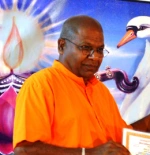


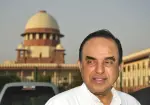
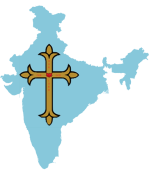

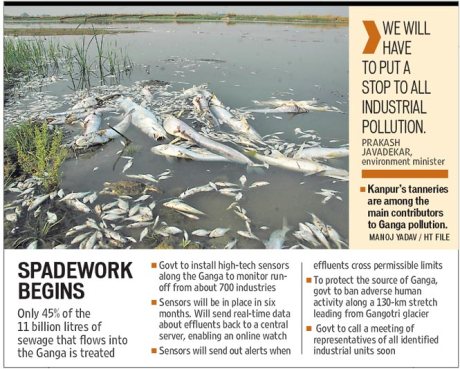
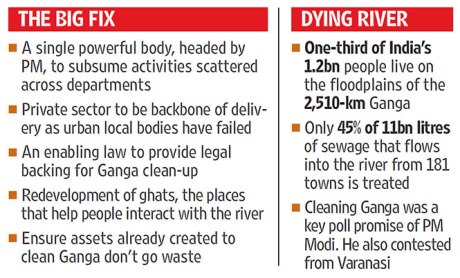
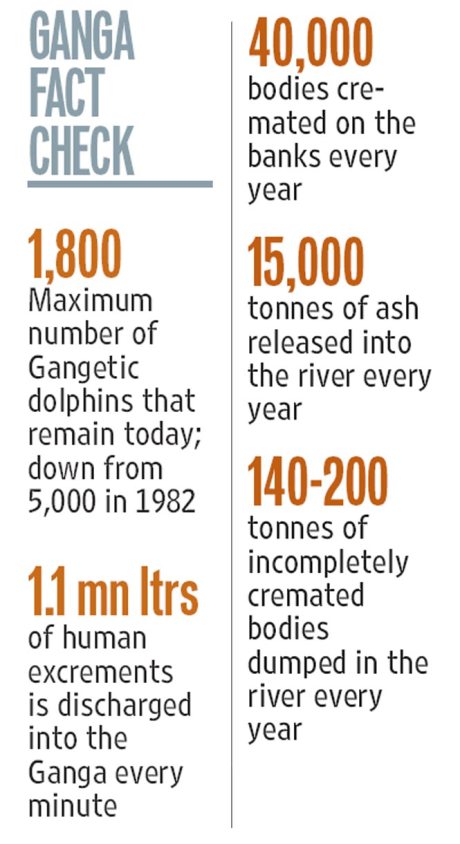






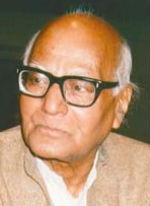






It is easy for the courts, the Accounts & Audits & the Vigilance to raise questions and to criticize; but, none from these areas have solved any problem!
LikeLike
Its a Big Trouble, But how the clean is more than 25 years the Goverment with the credit will other different than Modi’s Government. So how says in Mexico: Ya para que.
LikeLike
Tell us one place where Ganga is clean? National Green Tribunal asks Centre – PTI – Times of India – Oct 9, 2015
NEW DELHI: The National Green Tribunal on Friday asked the government to “tell one place” where the Ganga is clean and said that despite spending huge sums, the situation has gone from bad to worse.
Expressing open displeasure over the government’s lackadaisical approach towards ensuring cleanliness and uninterrupted flow of the river, it said “we take it that almost nothing has happened in reality.”
The green panel, which was asked to act against industrial units polluting Ganga by the Supreme Court, said the Centre and the states over the years have only been shifting responsibility and nothing concrete was visible on the ground.
“Would you please tell us that is it correct that more than Rs 5,000 crore has been spent on Ganga in making it worse from bad. We don’t want to know whether you have allotted this quantum of money to the states or have spent it yourself.
“Out of the 2,500km stretch of the river Ganga, tell us one place, where the condition of the river has improved,” a bench headed by NGT chairperson Justice Swatanter Kumar asked.
The counsel appearing for ministry of water resources told the bench that almost Rs 4,000 crore has been spent on the rejuvenation of the river since 1985 till last year.
He said that Ganga Action Plan (GAP) Phase I was launched as a centrally-funded scheme in 1985 and later GAP Phase II was initiated in 1993 to improve the river’s water quality. In 2009, “National Ganga River Basin Authority” (NGRBA) was setup for pollution control in the Ganga.
NGRBA, a World Bank-funded scheme, was aimed at effective abatement of pollution and conservation of Ganga and 70 per cent of the total project cost was contributed by the Centre and the remaining expenses were borne by the states, he said.
To this, the bench said, “… Better be careful of what you say. We take it as almost nothing has happened in reality. It is not suddenly that we are asking for all the information from you.”
“We have been waiting for the last one year. But for one reason or the other, you have been delaying the issue. We don’t want to comment on that. But this time we are not leaving it to your discretion, be rest assured. To clean Ganga is your prime responsibility. Days are very short for you,” the bench said.
LikeLike
Action soon against economic units polluting Ganga: Government – The Economic Times – PTI – New Delhi – 6 August 2015
NEW DELHI: Government has asked the pollution control boards to initiate action against industrial units discharging contaminated effluents in river Ganga, Union Minister Uma Bharti informed Lok Sabha today.
She said the government has asked the pollution control boards to initiate action against such industrial units, in a bid to stop untreated water from flowing into the Ganga.
During the Question Hour, the Water Resources, River Development and Ganga Rejuvenation Minister said her Ministry would soon finalise a plan in this regard and send it to the Cabinet for approval.
The government has launched the ambitious ‘Namami Ganga’ programme to rejuvenate the river which was fully funded by the Centre.
“We are committed to clean Ganga,” Bharti said while adding that the people’s representatives and the society as a whole needed to work together in this direction.
Bharti said the government proposes to encourage public participation, especially of those living on the banks of the Ganga and nearby areas in its efforts to rejuvenate the river.
An Eco Task Force is being raised which will be primarily manned by ex-servicemen living on banks of Ganga to aid local participation, she said.
Apart from rejuvenation of Ganga, the programme also covers all the tributaries of the river. “Yamuna Action Plan, Gomti Action Plan, Damodar Action Plan are already under operation and work on Ramganga and Kali is under implementation,” Bharti said.
Under the programme, an amount of Rs 528 crore has been earmarked for public participation, including towards raising of Ganga Task Force, for a five-year period (2015-2020). Till end of June, Rs 91.75 lakh has been spent.
To a query that less amount has been spent so far, the Minister said enough was being spent and money would be further spent on the cleaning efforts “wisely”.
LikeLike
River Ganga Likely to be Clean by 2020: Union Minister Uma Bharti – Press Trust of India – NDTV – July 30, 2015
NEW DELHI: Cleaning of river Ganga is expected to be completed by 2020, by which time desired results of initiatives taken up for the purpose will be visible, the government has said.
In reply to a question in the Rajya Sabha, Union Water Resources Minister Uma Bharti said cleaning of the river Ganga was a massive task.
“The present initiative of Ganga cleaning is expected to be completed by 2020, by which time most of the projects that have initiated/proposed are expected to be completed and desired results will be visible,” she said.
The National Ganga River Basin Authority (NGBRA) was launched in 2009 with the renewed vision of cleaning river Ganga using a basin wide approach.
Since inception and till NGBRA was launched (1985-2009), 966 projects for cleaning Ganga were launched, 902 projects were completed and 2495.73 million litres per day (MLD) treatment capacity was created, she added.
“Under NGBRA, 93 projects have been sanctioned in 55 towns in main stem Ganga states at a cost of Rs. 7350.38 crore. The sanctioned projects are estimated to create a treatment capacity of 762 MLD,” Bharti said.
On the other hand, responding to another query Minister of State for Water Resources Sanwar Lal Jat said that as per the CPCB assessment, 764 Grossly Pollution Industries (GPIs) units are utilising 1123 MLD of water and discharging 501 MLD of waste water.
According to him, CPCB has issued directions under Section 5 of Environment Protection Act to 200 industries and directions under Section 18 (1) (b) of the Water (PCP) Act, 1974 to 178 industries.
“In addition, it has issued closure directions to 68 units. The Uttar Pradesh State Pollution Control Board has also issued closure directions to 98 tanneries for operating without the consent of the Board on the directions of National Green Tribunal,” Mr Jat added.
LikeLike
Ganga can’t be cleaned in 50 years: Joshi – PTI – The Hindu – Varanasi – June 6, 2015
Toeing a line different from his party-led government on ambitious ‘Namami Gange’ programme, senior BJP leader Murali Manohar Joshi on Friday said that the Ganga can’t be cleaned even in next 50 years the way the project to clean the river was being carried out.
Expressing his reservations on clean Ganga project, Dr. Joshi said cleaning the Ganga would be a far-fetched dream till there was uninterrupted water flow in the river.
“Cleaning the Ganga would be a far fetched dream till there was an uninterrupted flow of water in the river. The river cannot be cleaned even in next 50 years, they way river was being cleaned by dividing it into small parts, converting it into small ponds,” Dr. Joshi said, adding that the Ganga was our lifeline, and any threat to the Ganga was a threat to our culture and tradition.
The senior BJP leader advocated for an uninterrupted flow of water in the Ganga and questioned Union Minister Nitin Gadkari’s Inland waterways project of running cruises and large ships in the Ganga for transportation of heavy goods.
“How will you run large ships when big boats are unable to move on the river (Ganga mein Jahaz chalana to door, badi nav bhi nahi chal payengi, is yojana ko lagu karne se pahle Ganga ki maujuda isthti ki jaanch karale).”
Uma Bharti’s reaction
Meanwhile in Jaipur, Union Water Resources Minister Uma Bharti on Friday said she would seek Murli Manohar Joshi’s views to remove shortcomings in the ‘Namami Gange’ programme after he questioned the project and said that it would not be be completed within two years.
LikeLike
LikeLike
Centre’s claim on Ganga remains unfulfilled: Experts – Binay Singh – Times of India – Varanasi – 23 May 2015
VARANASI: Narendra Modi’s pledge on the bank of the Ganga here on May 17, 2014 that he would serve ‘Maa Ganga’ to end its miseries, is yet to materialize. Evaluating his government’s one-year performance on the scale of Ganga cleaning, most environmentalists and river scientists are disappointed to note the condition of the holy river one year down the line.
Though the Modi government came up with Namami Gange programme, an integrated Ganga conservation mission with a budget of Rs 2,037 crore in the Union Budget, nothing remarkable has been achieved, particularly in PM’s own constituency. This has been proved by the Centre’s admission before the Supreme Court in September that the water quality of the Ganga at Varanasi and Allahabad was most unfit even for bathing purpose.
“Whatever is being done in the name of river cleaning is improper and far removed from reality. As the pollution managing potential of each place is different due to the river’s morphology and dynamics, pollution managing potential of various sewage treatment plants (STPs) has been wrongly quantified,” said river scientist and former professor of civil engineering at Banaras Hindu University Prof Udai Kant Chowdhary.
According to him, pollutants in different forms such as domestic effluent from mega cities, towns and villages reach the river through various sources. Also, micro and macro level industries discharge pollutants directly and indirectly into the Ganga. “Even now, pollutants from all these sources are being discharged without conceptualizing the idea that the river is a body system in which all locations are different in structure, shape, size, orientation, etc,” he said.
Seconding his opinion, BHU environmentalist B. D. Tripathi said: “It is true that some ghats are getting a cleaner look, but the condition of the Ganga has not improved. There is an urgent need for corrective measures to make the river pollution free. Tripathi is also an expert member of the National Ganga River Basin Authority (NGRBA).
Similar was the opinion of another environmentalist Vishwambhar Nath Mishra, the president of Sankat Mochan Foundation (SMF), an NGO working for the cause of Ganga for over three decades. “The basic need of the Ganga, i.e., improvement in its water quality, is being overlooked,” said Mishra, who is also mahanth of the famous Sankatmochan Temple. – Times of India, 23 May 2015
‘Sin’ of polluting Ganga may soon be a crime – Vishwa Mohan – Times of India – New Delhi – 18 May 2015
NEW DELHI: One year may not be enough for him to show results as far as his pet Ganga cleaning project is concerned, but Prime Minister Narendra Modi is determined to demonstrate substantial progress on the issue when his government goes to the polls at the end of its term.
A timeline for this complex assignment, discussed in the Cabinet last week, indicates that the Centre wants to stop completely untreated water flowing into the river by March, 2019 and will possibly arm authorities with a law having provisions to penalize polluters by that time.
The Union water resources and Ganga rejuvenation ministry has been in discussion with other ministries including urban development, environment and law over four different drafts which talk about possibility of framing a law with objectives of abating pollution and maintaining sustainable cleanliness.
Converting the National Ganga River Basin Authority (NGRBA) into a commission under a Parliament Act is the most possible course if, at all, the government finally decides to opt for a legal provision to provide teeth to its task of Ganga cleaning in a much more effective manner. The NGRBA is a key central body which monitors planning and execution of all schemes of Ganga rejuvenation in coordination with five states including Uttarakhand, Uttar Pradesh, Bihar, Jharkhand and West Bengal.
Though making a law with criminal provisions is not priority at the moment when the government still has to create adequate anti-pollution infrastructure, the idea continues to be part of the official discourse on Ganga cleaning.
A proposed law on this matter was discussed as one of the key agenda of the high-level review meeting on Ganga rejuvenation in March when Modi called for an “uncompromising mission-mode approach” to stop further pollution of the country’s national river. – Times of India, 18 May 2015
LikeLike
Cabinet clears Rs20,000 crore outlay for Clean Ganga project – Pretika Khanna, Elizabeth Roche, Mayank Aggarwal – Live Mint – 14 May 2015
New Delhi: The Union cabinet approved on Wednesday an outlay of Rs.20,000 crore for the next five years for the “Namami Gange” (Clean Ganga) project.
The project to clean up the polluted national river is to be implemented by the national mission for clean Ganga and its state counterparts.
The Clean Ganga programme was one of the manifesto promises of Bharatiya Janata Party (BJP), the largest constituent of the National Democratic Alliance (NDA) government, which completes a year in office on 26 May.
The government has already set up a separate ministry to lead the effort to rejuvenate the river.
“Marking a major shift in implementation, the government is focusing on involving people living on the banks of the river to attain sustainable results. Drawing from the lessons learnt from previous implementation, the programme also focuses on involving the states and grassroots-level institutions, such as urban local bodies and panchayati raj institutions, in implementation,” said a statement released by the government.
To speed up the process, the centre will take over the entire funding of various activities and projects under the programme.
The centre also plans to provide for operation and maintenance of assets for a minimum period of 10 years.
Namami Gange will focus on “pollution abatement interventions” through the treatment of wastewater flowing through drains into the river, use of innovative technology and immediate short-term measures for arresting pollution at exit points on the riverfront.
The government is also planning to set up a four-battalion Ganga eco-task force as a territorial army unit. The ministry of defence has approved the proposal for the unit, which will include ex-servicemen who will help improve public awareness about the river and stop people from polluting it. This is part of efforts to turn the mission into a “people’s programme”—something that has already been endorsed by Prime Minister Narendra Modi.
The government is also considering legislation to check pollution and protect the river.
The current budget allots Rs.4,173 crore for water resources and Namami Gange—more than double the initial sum of Rs.2,037 crore that was set aside in the previous budget presented in July 2014, when the programme was announced.
Environmentalists were disappointed with the programme.
“It is old wine in an old bottle. Nothing is going to happen if the government continues to take this approach. It is not different from the Ganga Action Plan and Yamuna Action Plan. It is an ecological problem and not an engineering one. Disappointed with this approach. The river needs flow; there is no mention of strategy of how to bring back the flow,” said Manoj Mishra, convener of Yamuna Jiye Abhiyaan, a Delhi-based organization working to revive Yamuna river.
The cabinet on Wednesday also gave approval to India signing a pact with China for cooperation in mining and minerals. The pact will provide an institutional mechanism for cooperation and “will help in exchange of information on resources, laws and policy … encouragement of transfer of technologies and promotion of value addition,” said a government statement.
The cabinet also approved the signing of a tourism promotion agreement with China, as part of the efforts to promote people-to-people understanding between the two countries.
“The agreement is to be signed during forthcoming visit of the prime minister to China,” a government statement said, referring to Modi’s 14-16 May visit. He will also visit Mongolia and South Korea after China.
“The main objectives of this agreement are … to encourage cooperation between tourism stakeholders, including hotels and tour operators; to establish the exchange programmes … to invest in the tourism and hospitality sectors; to participate in travel fairs, exhibitions in each other’s country; and to promote safe and sustainable tourism,” said the statement.
The cabinet gave its go-ahead for a pact between India and Mongolia for cooperation in border guarding, policing and surveillance. The agreement “will strengthen bilateral cooperation in the field of border management as both countries’ borders are porous and have difficult terrain,” another government statement said. It will also “increase effectiveness in border security cooperation and best practices sharing. This would help in providing necessary peaceful ambience which is a prerequisite for the development of society as a whole,” it added.
Another pact for the transfer of sentenced persons between India and Mongolia that will enable such people to complete their sentences in their home country, also received the cabinet’s nod.
The cabinet also cleared the signing of two pacts for cooperation with South Korea in electric power development and renewable energy and in the area of maritime transport and logistics.
The former is “expected to take forward development in the power sector for providing equitable access to reliable electricity supply to consumers through bilateral cooperation,” a government statement said. “The focus of attention will be bilateral cooperation in the areas of electric power development, renewable energy, smart grids, transmission and distribution of electric power, energy efficiency and energy storage systems. Measures in these areas will improve energy security and reliability of supply, improve energy access and facilitate sustainable economic growth.”
The pact on maritime cooperation aims to boost cooperation in sharing of technologies, training of seafarers, port operation, facilitate cooperation and partnerships between the maritime transport, the utilization, development and management of domestic and overseas ports.
The cabinet also approved a comprehensive new urea policy for the next four financial years. It aims at maximizing indigenous urea production and promoting energy efficiency in urea units to reduce the government’s subsidy burden.
The policy will result in total subsidy savings (direct and indirect) of at least Rs.4,829 crore over the next four years.
“Savings in energy shall reduce the carbon footprint and would thus be more environment-friendly. It will enable the domestic urea sector to become more energy efficient, would rationalize the subsidy burden and incentivize urea units to maximize their production at the same time,” said an official statement.
LikeLike
Ganga still waiting for Modi’s Midas touch: Supreme Court slams Centre for slow progress on cleaning holy river – Kumar Vikram – Daily Mail – 4 May 2015
While filing his nomination as a BJP candidate from Varanasi for the 2014 Lok Sabha elections, Prime Minister Narendra Modi said he had not entered the holy city of his own volition, but rather Maa Ganga (Mother Ganga) had called him there.
Subsequently, he had also promised to clean the holy river. But the ground reality is very different.
The National Democratic Alliance (NDA) government first came in for criticism from the Supreme Court over its slow progress in Modi’s ambitious Clean Ganga mission, and now even a house panel report has echoed the SC’s views.
Various schemes and fund utilisation, under the National Ganga Plan, are static as the project is yet to get approval from the Union Cabinet.
The parliamentary standing committee report on the Ministry of Water Resources (MoWR) and demand for grants for Ganga rejuvenation have brought to the fore the government’s sluggish progress and lack of separate allocations for schemes.
Under the Clean Ganga project, funds to the tune of Rs 1,500 crore which were allocated for the National Ganga Plan in the last budget have not yet been utilised, the report said. The only expenditure incurred under the project in 2014-15 was under the Yamuna Action Plan. A total of Rs 4.36 crore was spent from the Rs 8 crore allocated for the scheme.
The committee also noted that the non-expenditure of funds for want of approvals undoubtedly reflected the casual manner with which the work of cleaning the river was being carried out.
Noting that the budgetary provisions for the National River Conservation Plan, the National Ganga River Basin Authority and the National Ganga Plan had been increased, the panel said: “We feel the government is yet to take the first step towards the enormous task of cleaning and rejuvenating Ganga. We also hope the government will work in a more proactive manner to get approvals expeditiously.”
Interestingly, the panel observed that there was a difference between the expenditure predicted by the ministry and that quoted by the Indian Institute of Technology (IIT) consortium, which was entrusted to prepare Ganga River Basin Management Plan.
In January, the apex court had said the Centre should be ‘more keen than the SC’ to hold true to its promise of bringing Ganga back to its pristine self. It had also asked the Centre if there was any chance of cleaning up the 2,500 km-long river during its current term.
“You should be more keen than us…You said you are committed to this (cleaning the river). So, do you want to complete this task in this term or not?” the SC Bench had asked.
In its reply, the government had said a consortium of IITs was preparing a road map for the project. The Centre also proposed the setting up of 80 Sewage Treatment Plants (STPs) which, in a day, would process 368 million litres of water flowing into the river in the five river basin states.
In March, the government replaced IAS officer R.R. Mishra with TVSN Prasad as the mission director of the National Mission on Clean Ganga.
According to sources, the Centre was unhappy with Mishra as the project had not seen significant progress under his eight-month tenure. The NDA government, in 2014, launched the Namami Gange project in an attempt to bring back the past glory of the river.
The prime minister, in many high-level meetings, had emphasised the need for a time bound, swift and single-minded focus to clean the river Ganga.
The Narendra Modi-led government has divided the Ganga Rejuvenation Plan into pollution abatement, Ganga basin management and beautification of ghats and river fronts.
Cleaning the Ganga is in the priority list of the government and the budget allocation to the project clearly showed their intent.
The National Ganga Plan was allocated Rs 1,200 crore, which is Rs 600 crore more than the revised budget of 2014-15. In addition, a sum of Rs 100 crore was allocated for the development of ghats and beautification of river fronts at Kedarnath, Hardwar, Kanpur, Varanasi, Allahabad, Patna and Delhi.
LikeLike
‘Even the first step to clean the Ganga has not been taken’ – Hukum Singh and Rashme Sehgal – Rediff.com – 30 April 2015
Bharatiya Janata Party Member of Parliament Hukum Singh heads the parliamentary standing committee on water resources. Singh and the 21-member committee came down heavily on the government for having done little to arrest rising pollution levels in the Ganga and other water bodies. The committee’s report was tabled in Parliament on April 27.
Singh spoke to Rashme Sehgal for Rediff.com in an exclusive interview.
Your committee has come down heavily on the government for not taking adequate steps to clean up the Ganga.
Our panel believes the government has a huge task ahead in clean up the Ganga. We tabled our report in Parliament on April 27, in which we pointed out that basic work on a series of projects such as the National Conservation Plan, the National Ganga River Basin such as beautification of the river has not taken place because expenditure on these schemes has yet to be incurred.
There have been no separate financial allocations on these schemes which all remain at the approval stage. So where has the first step to clean and rejuvenate the river been taken?
Did you travel on the ground to see the Ganga’s pollution or have you arrived at theoretical assessments?
I belong to Muzzafarnagar and have grown up along the banks of the Ganga spending a large period of my youth in Rishikesh and Hardwar. In my childhood, the river was very clean. The last 15 years or so has seen the river become filthy because of the large quantities of untreated sewage and effluents being dumped in it.
As a first step, our parliamentary team decided to visit Rishikesh and Hardwar which is really the head of the river. Can you imagine what we saw?
Huge drains carrying untreated sewage being dumped into the river. The smell was so foul, we could not even stand there. Effluents from industry only serve to worsen the situation.
I remember, 30 years ago, Rajiv Gandhi launched an ambitious plan to clean up the Ganga for which he allocated over Rs 100 crore (Rs 1 billion). Now if you go to the towns of Roorkee and Hardwar, all the engineers associated with this project can be seen to have built palatial bungalows for themselves, but the river remains as dirty as ever. This is my personal observation.
Our 21-member team regrets that 70 per cent of sewage is flowing untreated into the river along its entire course. Hardwar and Rishikesh remain two of our holiest cities. Then why has the government failed to do anything on the ground?
Sewage treatment plants have been set up in these two cities.
STPs (Sewage treatment plants) may have been set up, but let me tell you that in most cities, these STPs do not work. This is often being done deliberately by local officials in order to save costs which they then go on to pocket. They use the excuse of lack of electricity.
I have spoken to a lot of officials who point out that things are not as simple as they appear. We did inspect the water supply systems as also visit the STPs but things have to be much more streamlined. The initiative has to be taken by the state governments.
Your team and you also visited Varanasi.
We did. But the situation there is no better. The story is the same with only 30 per cent of sewage water flowing into the Ganga after treatment whereas nearly 70 per cent of sewage flowed directly.
It is Prime Minister Narendra Modi’s constituency. He has promised to clean up the river there.
He is a man with a mission. He is also a decisive person. He is lucky that there is no one there who can challenge his decision. If he can do with the Ganga what he has done with the Sabarmati, that will be a major achievement.
Did your team visit the Sabarmati project in Ahmedabad?
Yes. The river appears like a small ocean and you cannot see even a twig in the river — it is so clean. Twenty to thirty thousand people visit the Sabarmati riverfront every day and it has become one of the major tourist spots in the city. That is what we want to do with all our rivers and more so with the Ganga and the Yamuna.
Minister for Water Resources Uma Bharti is committed to clean up the Ganga, but she appears to be hamstrung by bureaucrats.
Uma Bhartiji is very committed. She gave a written reply in Parliament which only confirms what our committee has been stressing which is that presently 118 towns are discharging sewage into the Ganga.
In 2011, over 534 million litres per day of sewage was discharged in the river in Kolkata while 426 MLD was discharged in Kanpur.
In Varanasi, 295 MLD was discharged and 232 MLD in Allahabad while in Patna the quantity was 252 MLD.
She has been in the ministry for one year. She has warned factory owners and industrialists who are dumping effluents to clean up their act and ensure no polluted water is discharged into the river. We need to give her another year before results will show on the ground.
I am not in favour of even treated water from STPs being discharged into the Ganga. I believe this water can be used for agricultural purposes, but it should not be allowed to flow into the Ganga.
Of course, at present there is a new technology by which this sewage water can be treated and used for drinking purposes. A lot of oxygen will be pumped into this water. It is an expensive technology. Let us see how far the government can use it.
But there are many other problems that afflict the river apart from dumping of sewage and effluents. The river’s natural flow has been affected because huge amounts of water are being diverted from Hardwar itself. This is something you must have noticed.
The Ganga is bifurcated into three separate parts in Hardwar. Local people complain that even Har Ki Pauri does not have enough water. The situation is so bad that between Saharanpur and Muzzafarnagar, the water of Ganga is being diverted at Deoband to feed the Yamuna canal.
The water that is flowing in the Yamuna in Delhi is really water from the Ganga. Today, sadly, the Yamuna has become a seasonal river.
Pollution levels have destroyed all aquatic life in these two rivers. There was time when contracts were given to fisherfolk to catch fish in the Ganga around Narora. Each of these contracts was over Rs 50 lakh (Rs 5 million). Today all that is finished.
Is this not a matter of great concern?
This should be a source of concern for every citizen in the country. We have 18 per cent of the world’s population and only four per cent freshwater.
Our panel has listed that we had over 5.5 lakh (550,000) water bodies in the country. We have allowed many of these to dry up or get polluted. We are preparing a schedule whereby these water bodies can be revived with the help of state governments.
Earlier they used to say they had no budget for this kind of revival, but I do not agree. The new 2015 Budget has allowed state revenues increase by ten per cent. Uttar Pradesh, for example, will now get an additional budget of Rs 26,000 crore (Rs 260 billion) which can be spent on the revival of our ponds and other water bodies.
There has been a lot of misgovernance in the last five decades which has allowed major encroachment to occur in our water bodies. This must be dealt with very strictly.
Over Rs 27,000 crore (Rs 270 billion) has been spent on cleaning the Ganga with little to show on the ground.
I believe the next 12 months will make a difference after which the desired results will begin to show. Let us see how the situation unfolds.
Your panel suggested there should be only one national level tribunal to handle water disputes between states.
At present, we have six tribunals to handle water disputes between states. There is a tribunal for the Brahmaputra, the Cauvery, the Godavari and so on each headed by a retired judge. Unfortunately, none of these disputes have been resolved so far. In my opinion, the results are almost negligible.
We have one National Green Tribunal which is doing excellent work. Why cannot we have one National Water Tribunal to look into all disputes and resolved them in a time-bound manner?
LikeLike
Will clean Ganga in 2 years: Uma Bharti – PTI – Economic Times – Hoshangabad – 15 Feb, 2015
Ganga will be cleaned in a “qualitatively manner” within next two years, Union Water Resources Minister Uma Bharti said here today.
“The plan for cleaning Ganga was made in 1985 but nothing happened in that direction in the last 29 years. As per my plan, we will clean Ganga in a qualitative manner in two years,” Bharti said.
She was addressing the concluding session of a three-day long River Festival organised by ‘Narmada Samagra’ NGO at the confluence of Narmada ..
She said Prime Minister Narendra Modi had given her a free hand in cleaning the sacred river and all ministries are with her department for the purpose.
Bharti said her ministry was taking all possible measures for the conservation of rivers in the country and efforts are being made to ensure that no river is dried up.
“Rivers will be inter-linked to ensure continuous flow of water in them, like linking of Ken-Betwa-Narmada-Kshipra river ..
Bharti said schemes would be framed taking into consideration the geographical and other attributes of each and every river in the country.
Praising ‘Narmada Samagra’ head and Rajya Sabha MP, Anil Madhav Dave, the minister said that under his leadership, the NGO ensured a continuous flow of water by involving people and other stake-holders living around the holy river.
She said she has named Ganga cleaning campaign as ‘Ganga Samagra Abhi ..
For making rivers pollution-free, people will have to ensure cleanliness and greenery along the periphery of rivers by planting trees.
Dave said a total of 1123 representatives working for the conservation of 310 rivers in the country took part in the river festival and shared their experiences.
He said next such event will be organised in 2018.
LikeLike
Modiji humaari Ganga maili: Centre’s plan to clean the river seems a pipe dream – Sandipan Sharma – FirstPost – Jan 15, 2015
Indian holy scriptures suggest a dip in the Ganga River on Makar Sankranti, which falls today, can cleanse believers of their biggest sins, including brahmhatya (brahminicide) and gauhatya (cow slaughter), and purify the soul.
But even the most devout follower can be forgiven that a dip in the Ganga could lead to atmahatya (suicide) today. Its water, holy and pristine once upon a time, has turned toxic; ingesting even small amount could be lethal.
A few years ago, Sankatmochan Foundation, a Varanasi-based NGO, assessed the quality of water around the popular ghats. Some of the samples had a fecal coliform count of 62,000 to 2.7 million per 100 ml. And a biochemical oxygen demand of 20-50mg per litre.
How dangerous is this? The permissible level of fecal count for bathing is just 500 per ml. And the oxygen demand (higher the pollution greater is the amount of oxygen required to clean it) should be less than 3 mg per litre.
Raj Kapoor was right; the Ganga has indeed become maili. Even Mandakini would have said no to bathing in it in a diaphanous sari because it would have been the equivalent of bathing in an open drain where thousands of people defecate and hundreds of industries release effluents.
Now, fancy drinking this water!
On Wednesday, the Centre promised the Supreme Court that it will clean up the river by 2018. It gave the assurance after the court asked the government if it intended to turn cleaning of the Ganga into an electoral issue in the next Lok Sabha election or complete the project before that.
The deadline set by the Centre is reassuring. But it looks like a pipe-dream, especially when the government is yet to give details of how it plans to carry out this ‘Bhagirathesque’ project.
From mythological kings, sages and politicians the Ganga has always been difficult for Indians. According to Valmiki, Bhagirath had to pray to Brahma for several years to release the river from his karmandal and then seek Shiva’s help to contain the damage from its fall on earth. Later, King Shantanu paid a heavy price for stopping Ganga, whom he had married, from immersing their eighth child into the river. When stopped, Ganga left him and their son Devvrat (Bhishma).
When Rajiv Gandhi came to power, he announced a Ganga Action Plan to clean the river. Over the next few years, after spending nearly Rs 5 billion, the GAP was abandoned. In 2009, Manmohan Singh launched Mission Clean Ganga to ensure that by 2020 no untreated municipal sewage or industrial runoff enters the 1,560-mile river.
A World Bank spokesman described the plan, saying, “Earlier efforts to clean the Ganga concentrated on a few highly polluting towns and centers and addressed ‘end-of-the-pipe’ wastewater treatment there; Mission Clean Ganga builds on lessons from the past, and will look at the entire Gangetic basin while planning and prioritising investment instead of the earlier town-centric approach.”
And in July 2014, Prime Minister Narendra Modi, whose symbolic gesture of contesting from Varanasi drew lot of attention to the plight of the holy river, launched the Namami Ganga project, promising to restore Ganga’s glory in three years. His government allocated nearly Rs 2000 crore for the project. But there has been no progress, a fact that roused the Apex Court’s ire.
Environmental experts point out that while addressing the pollution of the Ganges is important; focusing on pollutants alone is not the best approach.
“The decrease in water flow in the Ganges has reduced its capacity to purify or dilute its pollutants,” says Brahma Dutt Tripathi, professor of environmental engineering at the Banaras Hindu University and an expert member of the National Ganges River Basin Authority (NGRBA).
Hence attention must be paid to increasing the water flow in the Ganges, he says. This can be done by de-siltation, removing all mid-stream constructions, and halting construction activity along the river’s banks.
Instead of solving the problem, the Modi government may be adding to the river’s woes. One of the major solutions to the problem of pollutants in the Ganga is to increase its flow by removing impediments. But the government, according to the Hindu, is working on a scheme to further restrict the flow.
The Modi government has planned 16 new dams across a 1,600-km long stretch of the river between Varanasi and Hooghly. Experts fear the proposed dams would convert the Ganges into 16 huge ponds and destroy it forever.
The Ganga runs from the Himalayas, enters the plains at Rishikesh and finally merges into the Bay of Bengal. More than a billion people live in areas close to the river; thousands of industries operate near its banks.
According to the Down to Earth magazine, domestic sewage leads to maximum amount of contamination; around 2,700 million liters a day of sewage is produced by 50 cities located along the river, accounting for 85 percent of its pollution. Thousands of dead bodies, of humans and animals, are thrown into it every month.
For decades politicians, NGOs and policy planners have struggled to sort out these problems. But the pollution has multiplied; only huge funds have disappeared.
According to Indian mythology, Ganga is patita pavani—liberator of the sinner. Unfortunately, the river is now waiting for somebody to liberate her.
Will Modi save her, or, it will disappear like the other sacred river—Saraswati? We will know in 2018.
LikeLike
Supreme Court asks the National Green Tribunal to take action against industrial units polluting Ganga – Moneylife Digital Team – Moneylife – 29 October 2014
The Supreme Court asked the National Green Tribunal to take action against industrial units polluting Ganga, including snapping water and power connections to them, while slamming Centre and State Pollution Control Boards for their “failure” to punish erring units.
An SC bench headed by Justice T S Thakur gave a free hand to the Tribunal to take action against such units including forcing them to shut down.
“This is an institutional failure and your story is a complete story of failure, frustration and disaster. You need to stand up against the polluting units. It will take another 50 years if the task is left to you,” the bench said on the Pollution Control Boards.
“It is our duty to ensure purification of the river. There is no gainsaying that river has significance not only in religious and spiritual psyche of the people but it is also a lifeline of people,” the bench said.
The bench asked the Tribunal to file its report after every six months on the actions taken by it in controlling industrial pollution and posted the case for further hearing on 10th December, when it will pass further order to curb domestic effluents.
LikeLike
Gangotri glacier is ‘rapidly disintegrating’ – The Hindu – Dehradun – October 27, 2014
The Gangotri glacier is rapidly disintegrating, states the latest observation of a team from the Almora-based G.B. Pant Institute of Himalayan Environment and Development.
The team of the institute, which has been monitoring the Himalayan glaciers, particularly the Gangotri, since 1999, visited the glacier between June and October, this year.
Kireet Kumar, Scientist in the Glacial Study Centre of the institute, said, “Our team has been observing disintegration in the snout of the Gangotri glacier for around three year now. This time the team observed that the disintegration on the right side of the snout is taking place at a rapid rate.”
Dr. Kumar said rapid melting of the Raktvarn, Chaturangi, and Thelu — tributary glaciers of the Gangotri, which are placed at a higher altitude than the Gangotri and are towards its right — as the reason behind the heavy disintegration.
Gangotri: Shrinking and retreating
A 2008 research report published in Current Science titled ‘Estimation of retreat rate of Gangotri glacier using rapid static and kinematic GPS survey,’ stated: ‘The Gangotri glacier is retreating like other glaciers in the Himalayas and its volume and size are shrinking as well.’
The glacier has retreated more than 1,500 metres (m) in the last 70 years. Post 1971, the rate of retreat of the glacier has declined. Dr Kumar said the latest data projects that post 2000 the average rate of retreat of the glacier per year has been about 12 to 13 m.
Dr. Kumar said global warming was not the only factor, but, it was an important factor that was resulting in glacial retreat.
The Gangotri, one of the largest Himalayan glaciers, is in Uttarkashi district. Originating at about 7,100 m above sea level, the glacier is 30.2 kilometre (km) long and has a width that varies between 0.5 and 2.5 km. The Bhagirathi river, which is one of the main tributaries of the Ganga, originates from the glacier.
LikeLike
Web portal on Ganga rejuvenation launched – The Hindu – New Delhi – 12 September 2014
As part of its efforts to make the Ganga rejuvenation programme a mass movement, the Ministry of Water Resource on Friday launched a web portal to connect with the public on the ambitious project of the NDA Government.
The bilingual website has a provision to receive feedback from the public, where suggestions can be given about the Ganga Rejuvenation Plan.
The public can also upload files up to the size of 4 MB along with their suggestions, a press release issued in Delhi said.
Launching the website, Union Minister for Water Resource Uma Bharti said the launch of the website was an important tool to connect the public with the gigantic task of Ganga rejuvenation.
She expressed hope that large number of people concerned with the present state of Ganga would come forward to give their suggestions to improve the condition of the river.
She reiterated the Government’s resolve to rejuvenate the holy river within the shortest possible time.
The home page of the web portal http://nmcg.nic.in/, which opens with the message of Mahatma Gandhi on the holy Ganga is an encyclopedia of the largest river basin in India.
It also gives details of Namami Gange, an Integrated Ganga Conservation Mission, for which a sum of Rs 100 crore has been allocated for development of ghats and beautification of river fronts at Kedarnath, Haridwar, Kanpur, Varanasi, Allahabad, Patna and Delhi in the current financial year.
This apart, the web portal also has an external link for Gangapedia that details on news, events, blogs and library connected with river Ganga.
The website further contains a wide rage of information on clean Ganga mission, conservation of pollution project, status of NGRBA, Ganga action plan, water quality monitoring, industrial pollution monitoring, waste water management and comprehensive details of Ganga basin.
LikeLike